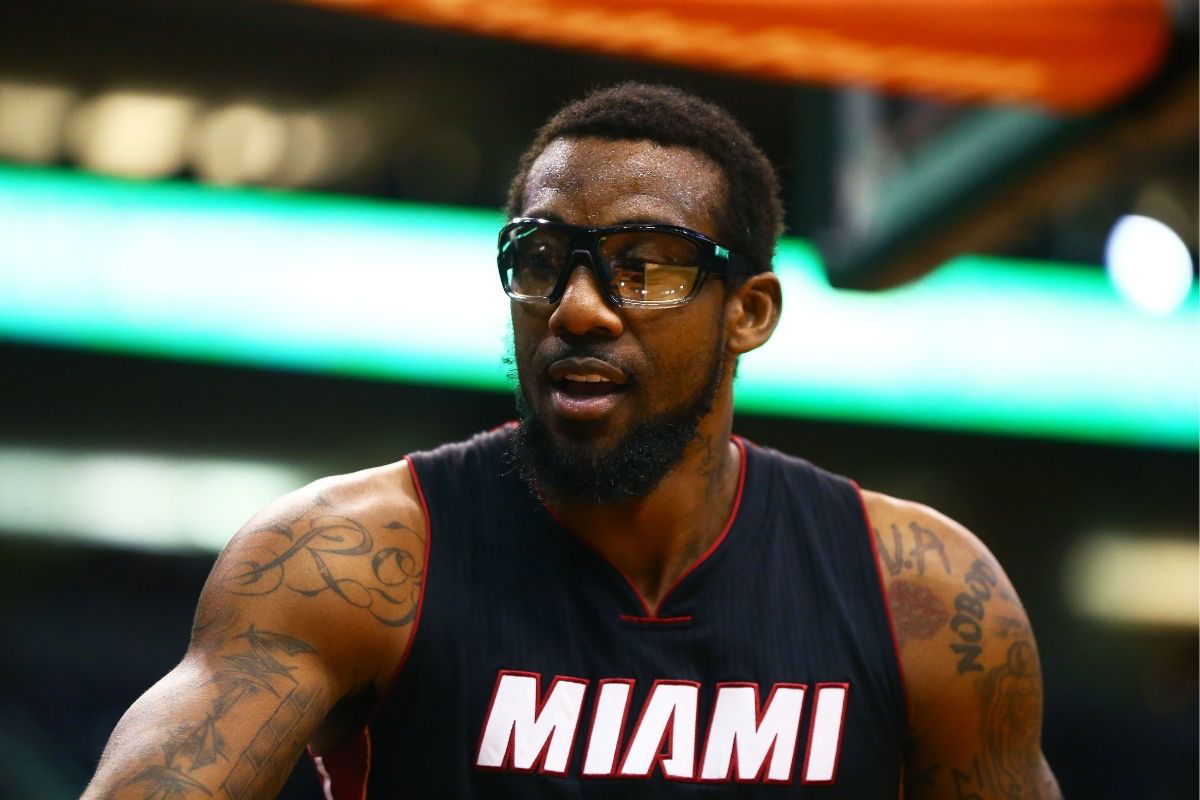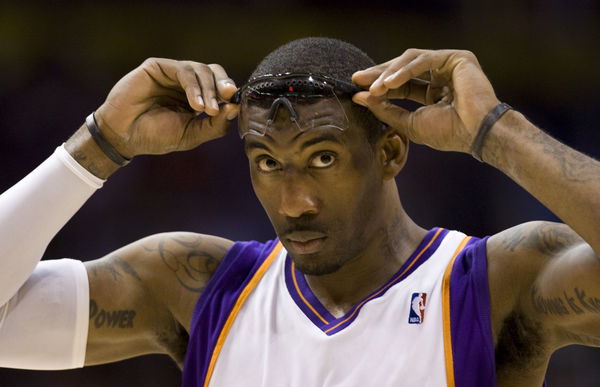
Imago
Jan 8, 2016; Phoenix, AZ, USA; Miami Heat forward Amar’e Stoudemire against the Phoenix Suns at Talking Stick Resort Arena. The Heat defeated the Suns 103-95. Mandatory Credit: Mark J. Rebilas-Imagn Images

Imago
Jan 8, 2016; Phoenix, AZ, USA; Miami Heat forward Amar’e Stoudemire against the Phoenix Suns at Talking Stick Resort Arena. The Heat defeated the Suns 103-95. Mandatory Credit: Mark J. Rebilas-Imagn Images
Think Amar’e Stoudemire, and you think monster dunks—but his story began far from highlight reels. He didn’t even start playing organized basketball until he was 14. Despite transferring five times amid a family crisis, he emerged as a top NBA prospect. Though he had verbally committed to Memphis, Stoudemire skipped college altogether and jumped into the 2002 NBA Draft. And he didn’t just make the cut—he took the league by storm.
Watch What’s Trending Now!
Fast forward to a 14-year NBA career that saw him rocking jerseys for the Suns, Knicks, Mavericks, and Heat. Along the way, he stacked six All-Star appearances, even with nagging knee injuries that constantly tested him. Still, his grit and game earned him a Hall of Fame nomination for the Class of 2025. But recently, instead of talking numbers or rings, Stoudemire opened up on something deeper—his childhood.
During his early basketball days, Stoudemire was figuring things out with no blueprint. “I was a real high school player already because I had really no guidance and no coaching when I was coming to high school. It was all raw talent,” he said on 7PM in Brooklyn podcast. “My brother played basketball. He was 6’9, and he was also raw and I was 6’9 at that time. Grew to be 6’10 once I got you know into the league basically rag. I kept growing but high school. I was all raw, I had no guidance.”
ADVERTISEMENT
What made things even tougher was his family situation. “You don’t send my father passed away early. My mom was in the streets. My brother was in the streets,” Stoudemire shared. Losing his father meant losing the only stability he had. Suddenly, he was the one making big calls for his future.
“So a lot of decisions I made in high school was based upon me just trying to figure it out. And so when I got with teams that were, you know, in positions to go to camp and these types of things.”

Imago
Amar’e Stoudemire was voted the best center in Suns history.
163860 Suns0414 Suns Nuggets Amare Stoudemire
Eventually, those decisions brought their own kind of heat. Opting for the Nike camp sparked controversy, not a routine choice. But even through the chaos, he kept growing, kept grinding, and finally made it to the NBA. Still, there’s more to that Nike camp story than meets the eye.
ADVERTISEMENT
ADVERTISEMENT
Why Amar’e Stoudemire picked Nike over others
Amar’e Stoudemire’s decision to rock with Nike wasn’t just about sneakers or the spotlight—it had layers. Back in the early 2000s, the high-flying big man, still just a teenager, had already proven himself on the Adidas circuit. Behind the headlines of “brand jumping” lurked a more personal story. ESPN reported that Nike’s executive director, Hall-of-Famer George Raveling, quietly deposited $100 into Stoudemire’s mother’s prison commissary—an act of kindness that fueled whispers of favoritism.
Those rumors even reached NCAA ears: shortly after his Nike camp appearance, questions surfaced about eligibility tied to alleged benefits, though no sanctions ever materialized. Still, Stoudemire didn’t let the noise linger for long. In a 2002 SLAM interview, he laid it all out.
Top Stories
WNBA 2025 Recap: Why Caitlin Clark’s 2025 Was A Success Despite Sitting Out This Season

Did NBA Fine Derrick White and Grady Dick for Exchanging Jerseys? Fact Checking Viral News

Paige Bueckers Gives a Peek Into Her Minnesota Christmas Away From WNBA

Savannah James Blames NBA for Spoiling Her Christmas Every Year After LeBron James’ Comment

Caitlin Clark, Paige Bueckers Might Be on Short End of New CBA Contracts, Per National Reporter

“George [Raveling] put a hundred dollars into the commissary for my mother when she was incarcerated,” he said. “There’s not much she could do with that. I went to Nike Camp because I had just dominated the Adidas circuit, playing against Lenny Cooke, Major Wingate, and them guys. I went to Nike so I could play against Shavlik Randolph and those guys and leave no doubt that I was number one.”
ADVERTISEMENT
So while the headlines played up the drama, Stoudemire’s focus was always on proving himself. Still, his story wasn’t without bumps. His mom’s repeated run-ins with the law, constant high school transfers—five times across two states—and academic struggles made his road to the NBA anything but easy.
Then John Adkins entered the picture. Adkins, a trucking exec and Nike team coach, once paid to free Stoudemire’s mom from jail. But as he explained, it wasn’t about recruiting. It came down to a favor for a family friend. And just like that, the Nike rumors took another unexpected turn. But in the end, it all played out for Stoudemire.
ADVERTISEMENT
ADVERTISEMENT
ADVERTISEMENT

